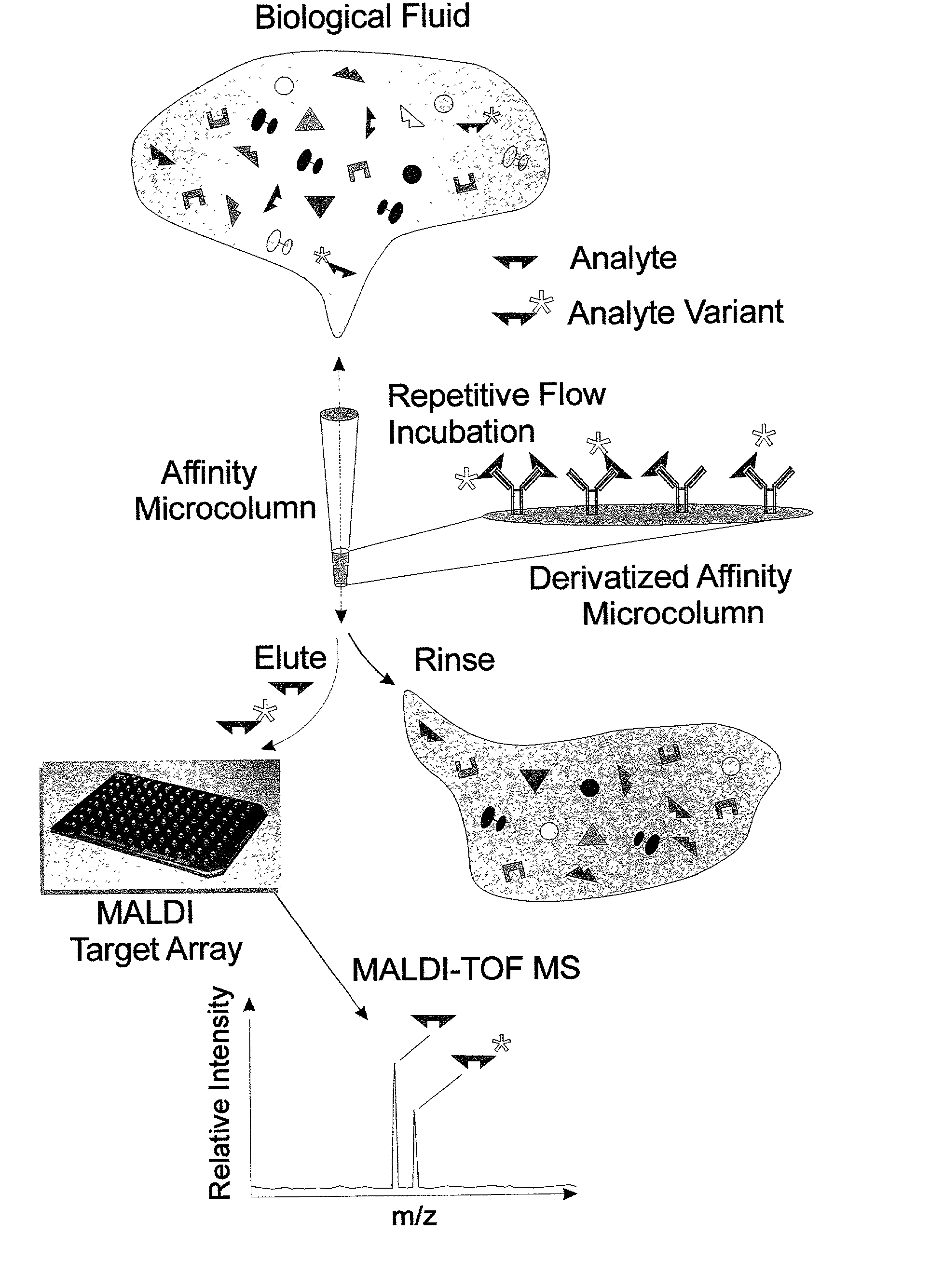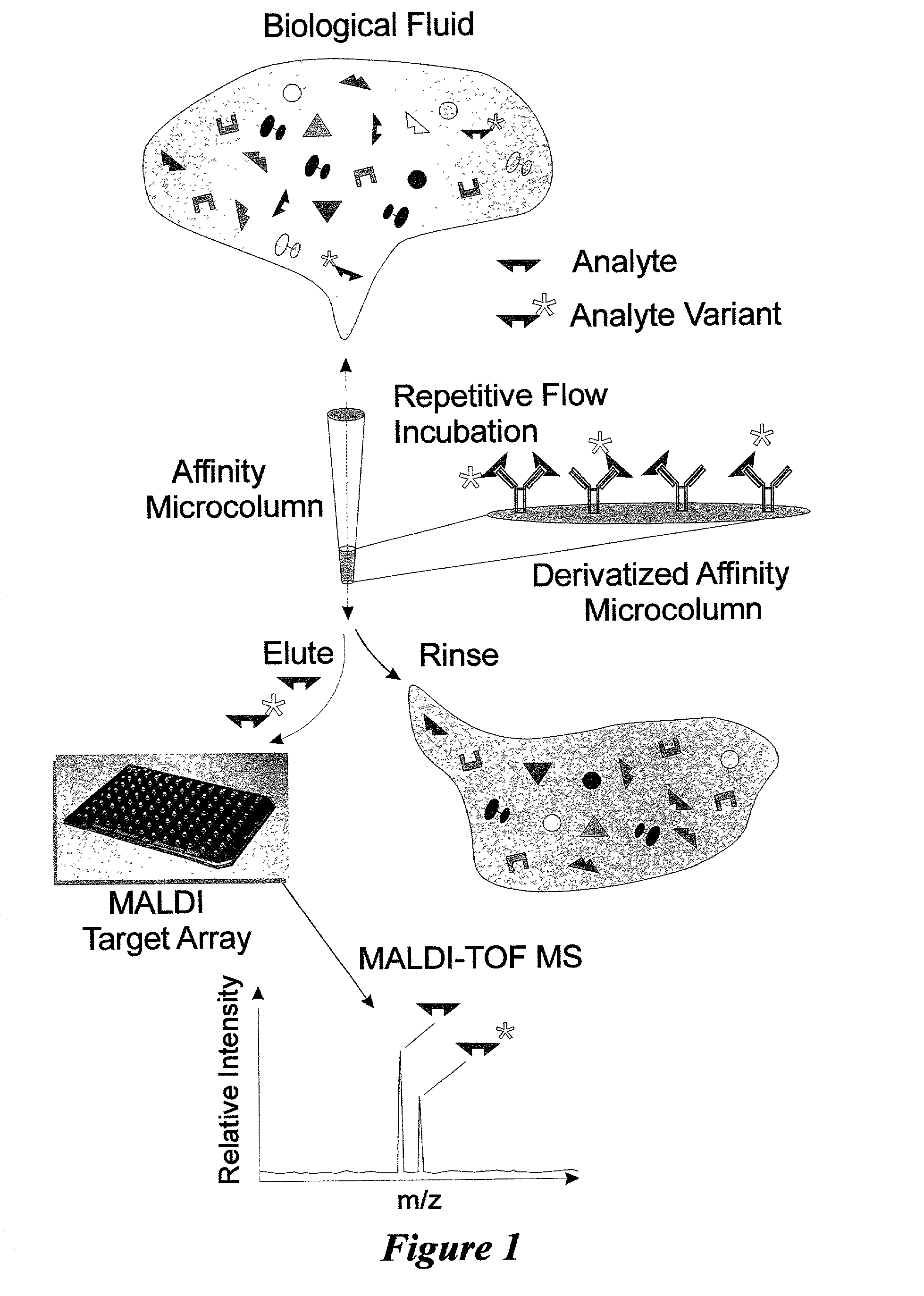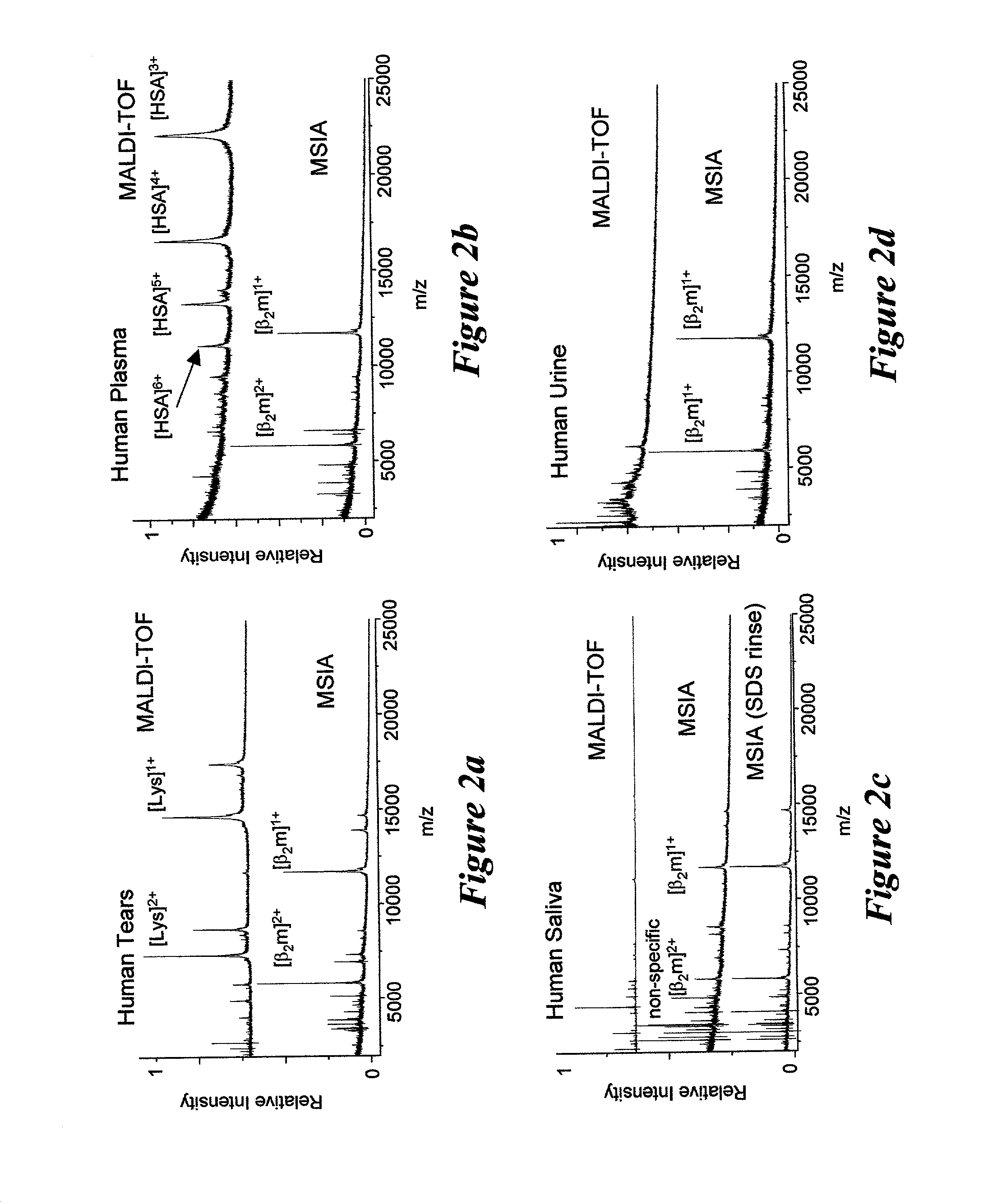Integrated high throughput system for the mass spectrometry of biomolecules
a biomolecule and mass spectrometry technology, applied in the direction of material analysis, ion-exchanger regeneration, particle separator tubes, etc., can solve the problems of ria (radioimmunoassay), relatively high degree of variability, complexity of biological media
- Summary
- Abstract
- Description
- Claims
- Application Information
AI Technical Summary
Benefits of technology
Problems solved by technology
Method used
Image
Examples
example 1
Porous Glass Molecular Trap Preparation using Metal Mold--Graphite Spray Release
[0067] Porous glass molecular traps are metered to the specifications of commercially available wide-bore P-200 pipettor tips using annealing molds made of stainless steel (100-1000 holes of 0.071 inch (entrance) per mold; 2-degree taper, polished and treated with graphite release agent). The molds are loaded with soda lime glass spherical beads (150-200 .mu.m; 75% SiO.sub.2, 15% Na.sub.2O and 10% CaO), and annealing is achieved in an argon-backfilled firnace by ramping the temperature from 772.degree. C. (equilibrated, t-0) to 800.degree. C. (t-3 minutes; one-minute equilibration). Upon completion of the ramp-anneal, the molds are immediately removed from the oven and the porous glass molecular traps extracted from the molds. This process typically yields porous glass molecular traps with high-flow characteristics and appropriate bore and taper to fit the entrance of the wide-bore P-200 pipette tips (ro...
example 2
Porous Glass Molecular Trap Manufacture Using Ceramic Molds--Pyrex
[0070] Ceramic molds are described to manufacture porous Pyrex glass molecular traps. Porous glass molecular traps are metered to the specifications of commercially available wide-bore P-200 pipettor tips using ceramic annealing molds. Zircar type-R plates (four by six by one-quarter inches) were purchase from Zircar Corporation (Florida, New York) and were end-mill surfaced for maximum flatness and CNC machined (2100 holes, 0.0625 inch bottom cut, 2-degree taper). Four of the ceramic molds loaded with ball-milled powdered borosilicate "Pyrex" (size ranging from 4 .mu.m to 300 .mu.m; 81% SiO.sub.2, 4% Na.sub.2O, 0.5%K.sub.2O, 13%B.sub.2O.sub.3 and 2% Al.sub.2O.sub.3), were stacked in a furnace where they underwent initial temperature equilibration, using a slow temperature up-ramp (60 minutes) to below the Pyrex softening point (816.degree. C.). The molds were then equilibrated for thirty minutes prior to being ramped...
example 3
Porous Silica Glass Molecular Trap Manufacture Using Ceramic Molds--Vycor
[0071] The ceramic molds described in EXAMPLE 2 are used to manufacture porous Vycor glass molecular traps. Zircar type-R ceramic molds were loaded with powdered "Vycor" (Corning Corporation), porous Vycor (Corning Corporation), controlled porous glass (Controlled Porous Glass, Inc., New Jersey), (size ranging from 4 .mu.m to 300 .mu.m, depending upon desired flow-through characteristics; 96% SiO.sub.2), and were stacked in a furnace where they underwent initial temperature equilibration, using a slow temperature up-ramp (90 minutes) to below the Vycor softening point (1500.degree. C.), they are then equilibrated for third minutes prior to being ramped up to about the Vycor softening point (1530.degree. C.), which was maintained to form porous glass molecular traps. The molds were slowly temperature down-ramped to a reasonable retrieval temperature (generally about 300.degree. C.) to avoid glass cracking. This ...
PUM
| Property | Measurement | Unit |
|---|---|---|
| concentrations | aaaaa | aaaaa |
| flatness | aaaaa | aaaaa |
| size | aaaaa | aaaaa |
Abstract
Description
Claims
Application Information
 Login to View More
Login to View More - R&D
- Intellectual Property
- Life Sciences
- Materials
- Tech Scout
- Unparalleled Data Quality
- Higher Quality Content
- 60% Fewer Hallucinations
Browse by: Latest US Patents, China's latest patents, Technical Efficacy Thesaurus, Application Domain, Technology Topic, Popular Technical Reports.
© 2025 PatSnap. All rights reserved.Legal|Privacy policy|Modern Slavery Act Transparency Statement|Sitemap|About US| Contact US: help@patsnap.com



